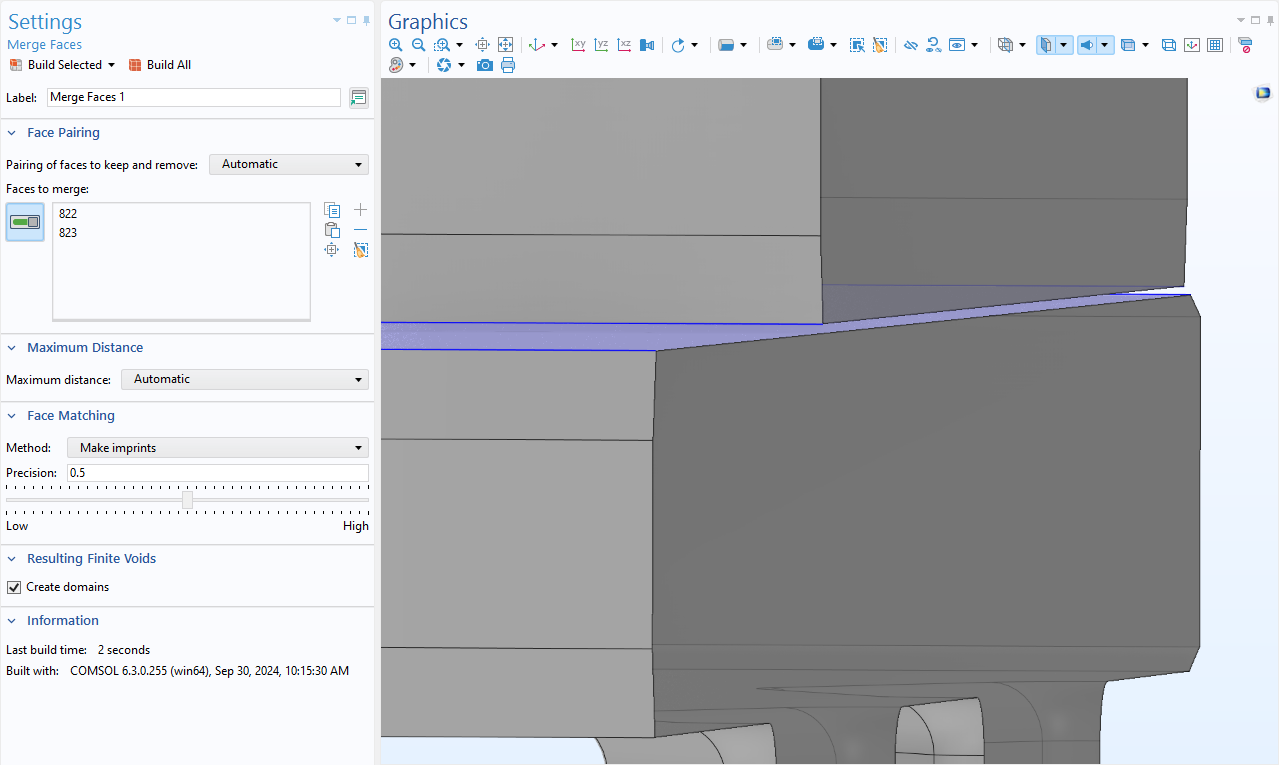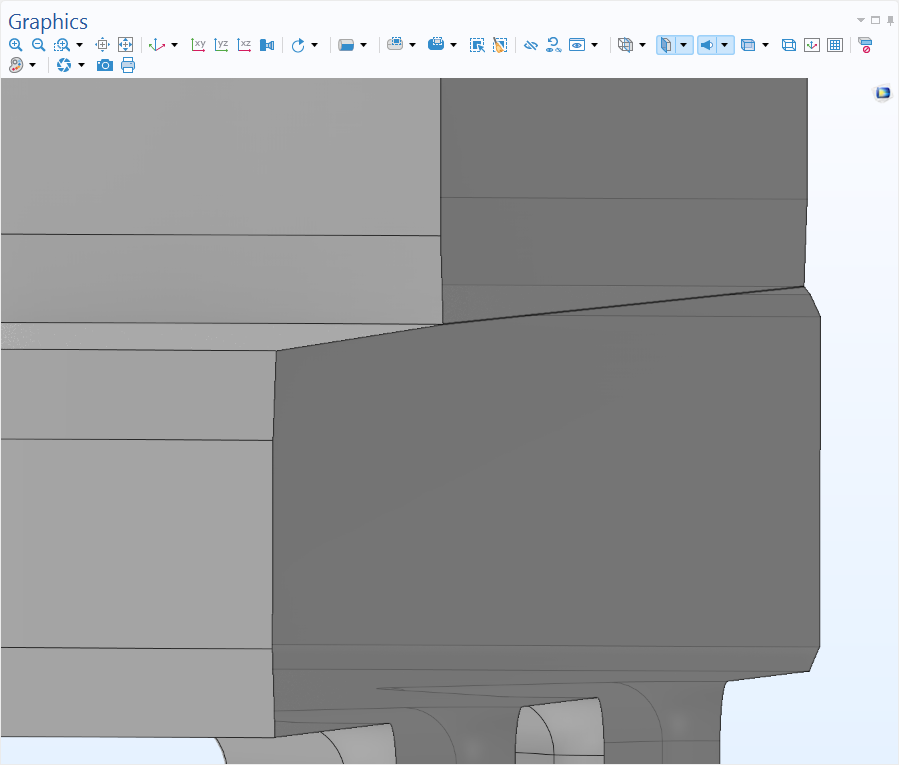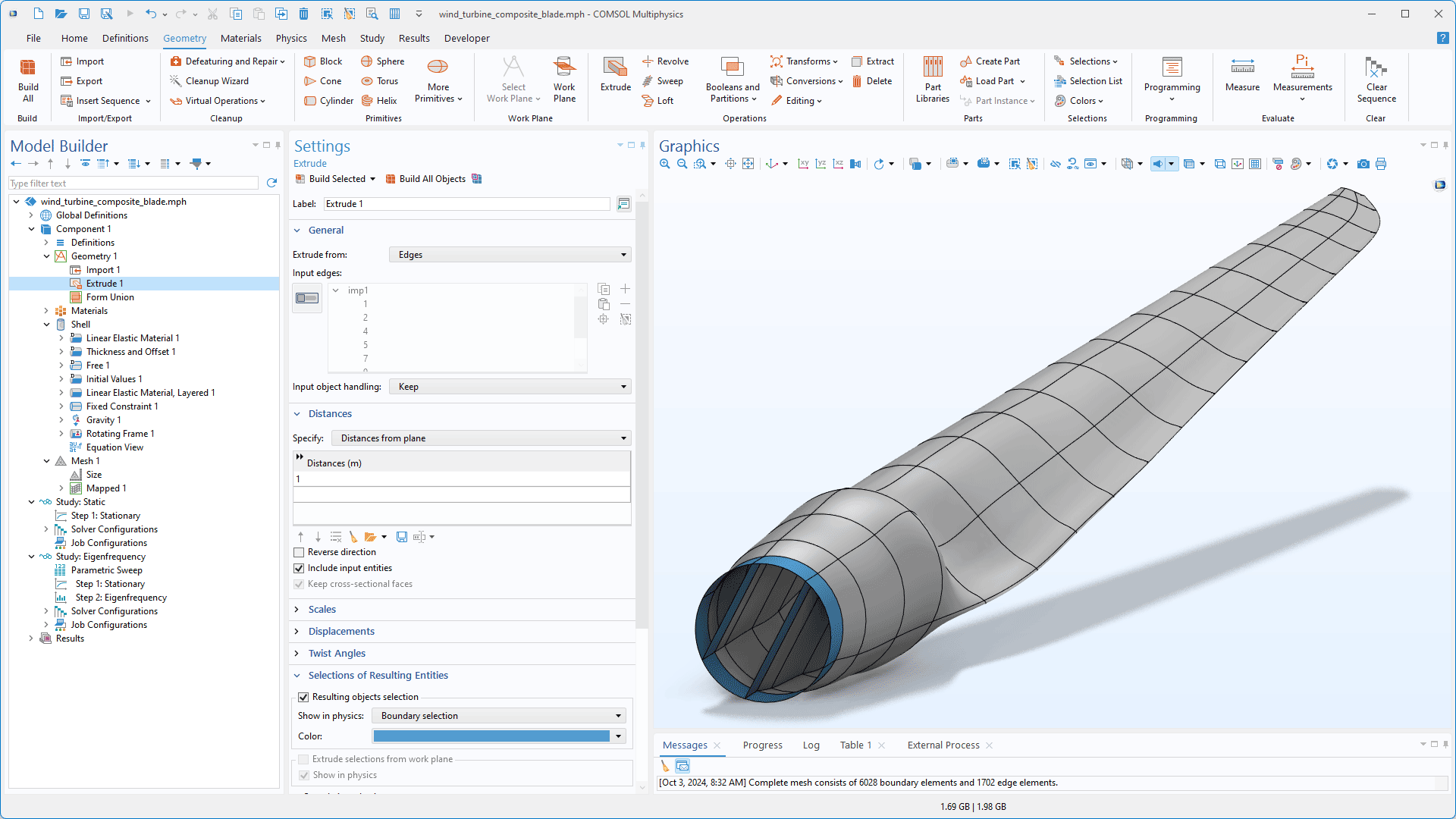Geometry Updates
COMSOL Multiphysics® version 6.3 introduces automatic geometry cleanup to prepare geometries for meshing; a new virtual operation for merging faces, used to collapse gaps between a set of surfaces; and the ability to add virtual operations in geometry parts and plane geometries. Read more about these updates below.
Automatic Geometry Cleanup
Small details and gaps in geometry can now be automatically detected and removed, simplifying the geometry for meshing purposes and reducing simulation size. The automatic process identifies small features like sliver faces, short edges, narrow gaps, and thin domains, which are then removed to prepare the model for analysis. For more control, the optional Cleanup Wizard makes it possible to adjust detail sizes and select cleanup operations.
The Geometry Cleanup functionality can automatically modify Boolean tolerances, add a Remove Details operation, and leverage functionality in the CAD Import Module or Design Module, depending on the detected features and available licenses. The Geometry Cleanup functionality is demonstrated in the Electrical Heating in a Busbar Assembly, Geometry Cleanup on a Wheel Rim Geometry, and Importing and Meshing a PCB Geometry from an ODB++ Archive tutorial models. Note that the more advanced features of the Geometry Cleanup functionality require a license for the CAD Import Module, Design Module, or one of LiveLink™ products for CAD. For more details, see the CAD Specification Chart.
Virtual Operations
The virtual operations toolkit now includes the Merge Faces operation, which merges faces and eliminates gaps or regions between selected surfaces. When using the CAD Import Module, Design Module, or one of the LiveLink™ products for CAD, the operation can also merge faces of different sizes and shapes by automatically creating the necessary imprints. The Merge Faces operation is also integrated into the new Geometry Cleanup process.
Plane geometry and geometry part sequences now support the addition of Form Union and Form Assembly nodes, as well as virtual operations and the Remove Details feature (for 3D models only). This makes it possible to clean up the geometry at an early stage of the creation process.
Improvements for Extrude and Revolve
In version 6.3, it is now possible to extrude edges into surfaces and revolve vertices into edges. This functionality is especially useful for extending imported shell and beam geometries. When extruding or revolving objects sketched in a plane geometry, any defined selections will automatically extend to 3D, helping to facilitate the setup of physics in a model.
Support for implementation of the ODB++ format was provided by Mentor Graphics Corporation pursuant to the ODB++ Solutions Development Partnership General Terms and Conditions (https://odbplusplus.com/design/terms-of-use/).



